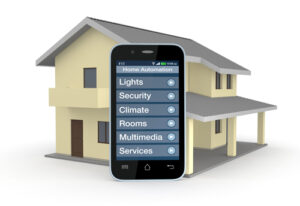1.6K
 New IHS Markit analysis reveals that the penetration of smart home systems is to reach 7% by 2025. Blake Kozak, principal analyst, smart home and security technology, IHS Markit explains the findings
New IHS Markit analysis reveals that the penetration of smart home systems is to reach 7% by 2025. Blake Kozak, principal analyst, smart home and security technology, IHS Markit explains the findings
Highlights
- The leading service providers with smart home offerings share core tenets that incorporate flexibility, innovation and ‘the experience’. As long as a service provider adheres to these values, the means of development and delivery of the ecosystem (proprietary or open) is inconsequential.
- IHS Markit projects the penetration of smart home systems will reach 3 percent of global households by 2018 and 7 percent by 2025. In 2023, professionally monitored smart homes will exceed non-connected, traditionally monitored security systems.
- In order to preserve the growth of the smart home, service providers need to have flexible billing models. The challenge with alternative models to the typical two- or five -year contact is churn and the cost of acquiring the customer. As a result, on-demand/no-contact models may be enticing for do-it-yourself (DIY) solutions, but may be less lucrative in the short-term for service providers. Despite this challenge, consumers are beginning to expect alternatives to long-term contracts in the form of on-demand billing, professional installation with self-monitoring or DIY installation with professional monitoring. For security providers, these alternative models can be an additional source of RMR for dealers seeking quick installations with minimal effort required.
Analysis
Rise of the DIY market
- Innovation is critical for service providers in the smart home. The future of the smart home will have less focus on safety and security devices and more focus on automation, user experience and ecosystems.
- It is no secret that the DIY market has taken revenue from professional channels because of the innovation and design flexibility of DIY versus the often vertically integrated and proprietary nature of professional offerings.
- As a result, service providers with vertically integrated ecosystems need to be quick to market with in-house innovation as well as necessary third party integrations, such as voice control with Alexa Skills or Google Home. Moreover, integrations with automotive, well-being (independent living and digital/telehealth) and multi-room audio will ensure differentiation, future proofing and additional revenue streams.
All about ‘The Experience’
- The experience is the final critical tenet for service providers to be fully engaged with the smart home. The experience could be a platform with a unique GUI or the experience could be devices that complement each other well, e.g. indoor/outdoor cameras with the complete spectrum of security and automation devices.
- If what a service provider offers is a single device without an ecosystem built around it, it must be compatible with others, and offer multiple transport protocols. For service providers, this could also mean consolidating the smart home intelligence into a router or gateway.
- Engaging the end user with problem-solving technology (hook products) at the start, and making it simple to add additional devices (a large ecosystem of potential devices) is important for long-term success. Whether the end-to-end ecosystem is built up in-house or outsourced with reliance on third-party integrations makes no difference for the long-term success of service providers in the smart home as long as the devices are thoroughly vetted with the platform.
- The advantages of in-house development cannot be ignored, with the ability to have tighter control of the data and end-user experience. Many of the industry’s top-players are moving in this direction.
Overall, service providers are in a unique position in that many already have millions of customers, so service providers that implement these three tenets will find the most success against the likes of Amazon, Apple, Samsung and Google/Nest.

